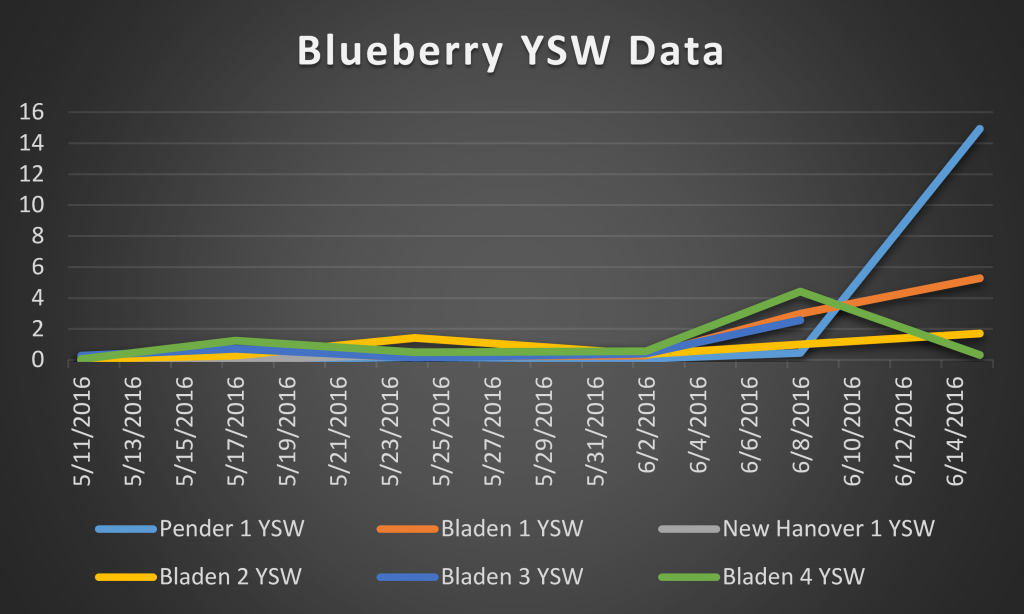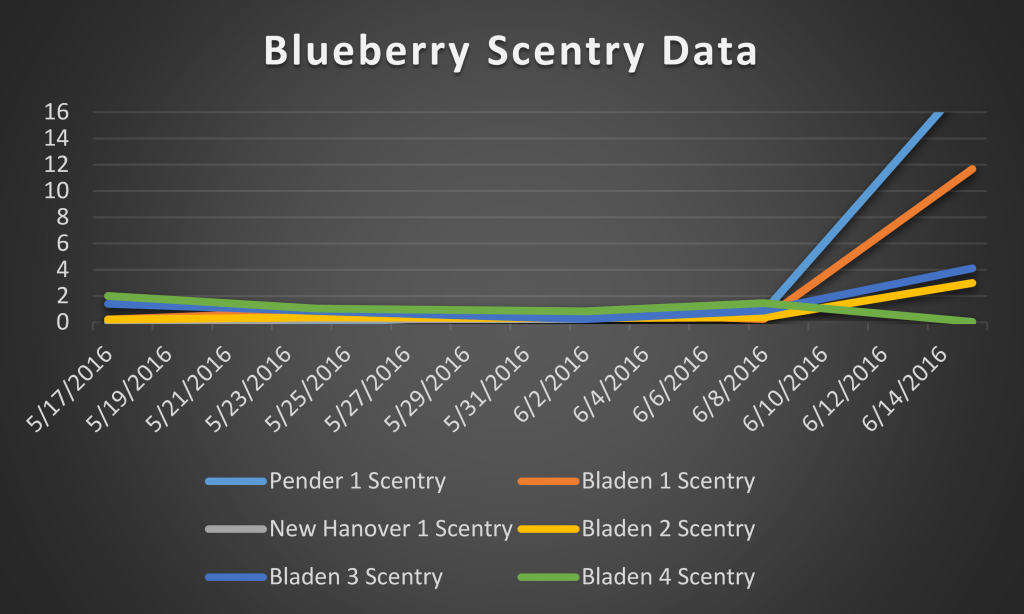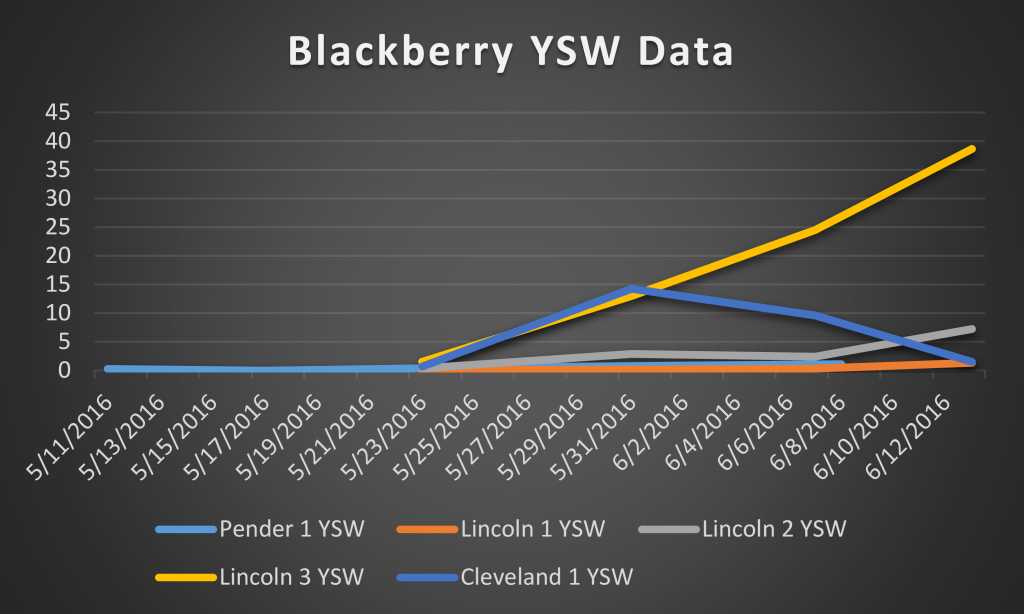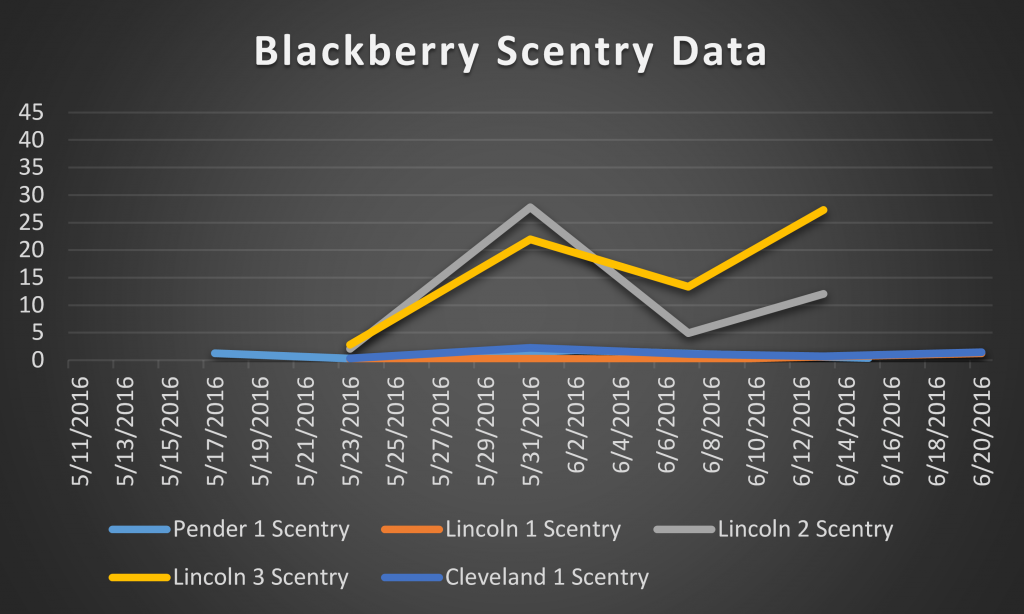Spotted Wing Drosophila Monitoring Report July 1, 2016
go.ncsu.edu/readext?417501
en Español / em Português
El inglés es el idioma de control de esta página. En la medida en que haya algún conflicto entre la traducción al inglés y la traducción, el inglés prevalece.
Al hacer clic en el enlace de traducción se activa un servicio de traducción gratuito para convertir la página al español. Al igual que con cualquier traducción por Internet, la conversión no es sensible al contexto y puede que no traduzca el texto en su significado original. NC State Extension no garantiza la exactitud del texto traducido. Por favor, tenga en cuenta que algunas aplicaciones y/o servicios pueden no funcionar como se espera cuando se traducen.
Português
Inglês é o idioma de controle desta página. Na medida que haja algum conflito entre o texto original em Inglês e a tradução, o Inglês prevalece.
Ao clicar no link de tradução, um serviço gratuito de tradução será ativado para converter a página para o Português. Como em qualquer tradução pela internet, a conversão não é sensivel ao contexto e pode não ocorrer a tradução para o significado orginal. O serviço de Extensão da Carolina do Norte (NC State Extension) não garante a exatidão do texto traduzido. Por favor, observe que algumas funções ou serviços podem não funcionar como esperado após a tradução.
English
English is the controlling language of this page. To the extent there is any conflict between the English text and the translation, English controls.
Clicking on the translation link activates a free translation service to convert the page to Spanish. As with any Internet translation, the conversion is not context-sensitive and may not translate the text to its original meaning. NC State Extension does not guarantee the accuracy of the translated text. Please note that some applications and/or services may not function as expected when translated.
Collapse ▲As the month of July has come to an end, so has the growing season for many of the varieties of blueberries at our research sites. Due to this, many of our participating growers have hedged portions of their fields to reduce the area of hospitable resources for pest species, including spotted wing drosophila (SWD). This reduction of available resources, combined with stormy weather the week of 6/15/2016 may have led to the spike in trap capture numbers seen below in both blueberry YSW and blueberry Scentry baited traps.
This increase in trap captures may also have been the impetus for predators like spiders and dragonflies to lurk around our traps. The spider in the picture below was doing just that before we deposited it on one of the surrounding blueberry plants so we could collect the trap’s contents without incident.
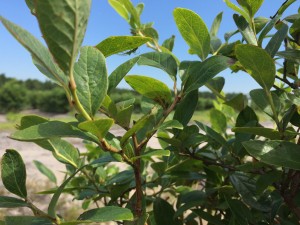
Spiders are fairly common at our research sites. This one here was found on one of our YSW trap posts. Photo: Grant Palmer
The average number of total (male and female) SWD captured per site per day are presented in the figures below. Trapping began at six blueberry fields on May 11, 2016. Scentry lures were not available until May 17th, so these were deployed at blueberry locations during the second week of monitoring.
YSW refers to traps baited with “yeast/sugar water”, and Scentry refers to traps with Scentry lures.
We are monitoring a total of five blackberry fields, and first checked traps on May 17, 2016. SWD trap captures are generally higher in blackberry fields as compared to blueberry fields.
Data is continually processed and will be updated weekly as it becomes available.
6/15/2016 was also the first collection day after new Scentry bait traps were deployed at our research sites. This is an additional reason why we may have seen sharp rises in our trap capture numbers. The scentry bait traps are rated for eight weeks, but they do not appear to last this long in North Carolina conditions. Our first set of Scentry bait traps were changed out after four weeks.
More information



